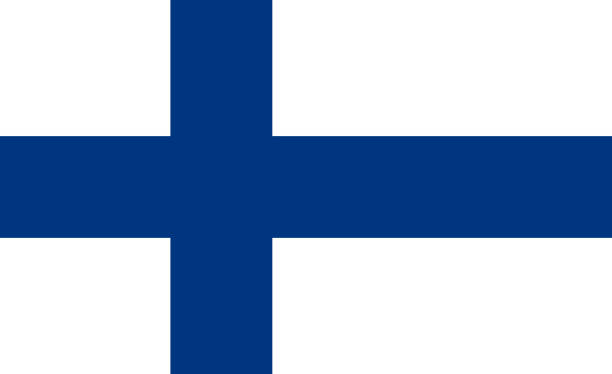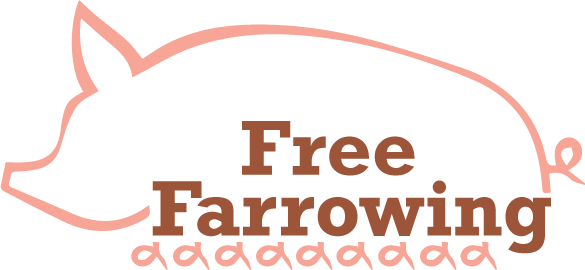Page updated June 2025.
The following pages summarise the statutory requirements as well as the codes of recommendations for housing pigs that specifically relate to farrowing and lactation systems. We provide the EU legislation as a baseline compared to other countries that have enacted or announced regulations prohibiting use of the farrowing crate or restrictions on installation of any new crates.
It is expected that producers are aware of all regulations relating to general conditions for keeping pigs (i.e. providing sufficient feed and ad libitum water).
However, where there are general requirements on flooring, lighting and noise levels that would affect the welfare of animals in the farrowing house these regulations have also been highlighted.
Further information on any aspect of the animal welfare legislation at EU and national level can be found in the relevant links highlighted throughout this page.
EU legislation

Current EU legislation for farrowing and lactating sows and their piglets:
This information is taken from the EU pig welfare directive which lays down the minimum standards for the protection of pigs.
Sows and Gilts
- “In the week before the expected farrowing time sows and gilts must be given suitable nesting material in sufficient quantity unless it is not technically feasible for the slurry system used in the establishment”
- “An unobstructed area behind the sow or gilt must be available for the ease of natural or assisted farrowing”
- “Farrowing pens where sows are kept loose must have some means of protecting the piglets, such as farrowing rails.”
Remember that the exemption on providing substrate if the slurry system does not allow is only in relation to the nest building period before farrowing. The general legislation states that “Member States shall ensure that … sows and gilts have permanent access to manipulable material at least complying with the relevant requirements” which are:
“Materials must be of a type and of sufficient quantity to enable proper investigation and manipulation activities, for example: straw, hay, wood, sawdust, mushroom compost, peat or a mixture of such, which does not compromise the health of the animals.” AHDB Pork have published practical guidance on environmental enrichment.
Piglets
- “A part of the total floor, sufficient to allow the animals to rest together at the same time, must be solid or covered with a mat, or be littered with straw or any other suitable material.”
- “Where a farrowing crate is used, the piglets must have sufficient space to be able to be suckled without difficulty.”
- “No piglets shall be weaned from the sow at less than 28 days of age unless the welfare or health of the dam or the piglet would otherwise be adversely affected.”
“However, piglets may be weaned up to seven days earlier if they are moved into specialised housings which are emptied and thoroughly cleaned and disinfected before the introduction of a new group and which are separated from housings where sows are kept, in order to minimise the transmission of diseases to the piglets.”
- Tail docking, teeth clipping, castration:
“Neither tail-docking nor reduction of corner teeth (i.e. uniform reduction of corner teeth by either grinding or clipping resulting in a smooth surface) must be carried out routinely but only where there is evidence that injuries to sows’ teats or to other pigs’ ears or tails have occurred. Before carrying out these procedures, other measures shall be taken to prevent tail-biting and other vices, taking into account environment and stocking densities. For this reason inadequate environmental conditions or management systems must be changed.” These procedures are not to be carried out beyond the 7th day of life.
“Tail-docking and/or castration must not be performed after seven days of age unless performed under anaesthetic and additional prolonged anaesthesia by a veterinarian.” The method of castration must not involve tearing of tissues.
Find out more detail on the requirements in legislation which relate to mutilations.
General Requirements
Flooring
“The accommodation for pigs must be constructed in such a way as to allow the animals to: have access to a lying area physically and thermally comfortable as well as adequately drained and clean which allows all the animals to lie at the same time”.
Floors must be:
- “Smooth but not slippery so as to prevent injury to the pigs and so designed, constructed and maintained as not to cause injury or suffering to pigs”;
- “Suitable for the size and weight of the pigs”;
- “If no litter is provided, form a rigid, even and stable surface.”
Remember: flooring in farrowing and lactation systems must implement the regulations necessary for the youngest stock using that flooring. Therefore if concrete slats are used, the legal requirements on minimum slat widths and slat width openings for piglets are:
- Slat widths:
- minimum = 50mm
- Slat width openings:
- maximum = 11mm
Lighting
- “Animals kept in buildings must not be kept either in permanent darkness or without an appropriate period of rest from artificial lighting. Where the natural light available is insufficient to meet the physiological and ethological needs of the animals, appropriate artificial lighting must be provided.”
- “Pigs must be kept in light with an intensity of at least 40 lux for a minimum period of eight hours per day.”
Noise Levels
- “Pigs shall not be exposed to constant or sudden noise.”
- “Noise levels above 85 dBA shall be avoided in that part of any building where pigs are kept.”
Animal Welfare Acts that detail domestic law for each country may have specific welfare requirements that should be adhered to. Any of these countries that belong to the EU should firstly comply with EU council directives. Those of relevance are:
- Council Directive 98/58/EC on the protection of animals kept for farming purposes
- Council Directive 2008/120/EC laying down minimum standards for the protection of pigs
Switzerland, Sweden and Norway



The use of a farrowing crate is prohibited.
There is specific wording relating to space, flooring and nesting material in the national legislation.
For Sweden please refer to SJVFS 2019:20 – Regulations amending the Swedish Board of Agriculture’s regulations and general advice (SJVFS 2019:20) on pig farming in agriculture.
For Switzerland please refer to Swiss Federal Council. 2008. Animal Protection Ordinance 455.1 (Updated March, 1st 2018). (Article 50 and annex 1 – Table 3) and Ordinance on keeping of livestock and pets 455.110.1 (Updated March, 1st 2018). (Article 26).
For Norway please refer to Regulations for Keeping Pigs (FOR-2003-02-18-175). Amended by regulation 18 December 2009 no. 1808 (in force 1 January 2010). https://lovdata.no/dokument/SF/forskrift/2003-02-18-175
Austria

Permanent use of the farrowing crate will be prohibited from 2033. Temporary crating will be permitted only around the “critical period” for piglet survival. The minimum size of the farrowing pen will be 5.5m2. Any pens built in Austria must be approved by the Animal Welfare Label. The link to approved systems is: Certified products – animal welfare compliant (tierschutzkonform.at)
Germany

The permanent use of farrowing crates will be phased out and a minimum pen size will be 6.5m2. Temporary crating will be permitted for up to 5 days ‘around farrowing’. There are specific regulations on flooring, nest building substrate and dimensions within the pen.
Please refer to Tierschutz-Nutztierhaltungsverordnung in der Fassung der Bekanntmachung vom 22. August 2006 (BGBI I.S. 2043) die zuletzt durch Artikel 1a der Verordnung vom 29. Januar 2021 (BGBI, I.S. 146) geāndert worden ist (https://www.gesetze-im-internet.de/tierschnutztv/BJNR275800001.html)
Finland

From 2024 the building of new farrowing crates was banned. There are specific regulations on flooring. Other regulations are the same as the EU legislation. Please refer to Animal Welfare Act 693/2023 https://finlex.fi/fi/lainsaadanto/2023/693#chp_5__sec_37__heading
New Zealand

The High Court in New Zealand declared in November 2020 that the standards on farrowing crates and mating stalls for pigs are illegal and invalid and should be banned from 2025.
The National Animal Welfare Advisory Committee reviewed current science, global best practice, and regulation of farrowing and mating systems for pigs, and provided recommendations for alternative farrowing systems. Please refer to MPI Discussion Paper 2022/05 (Changes to the Code of Welfare for Pigs and associated regulations | NZ Government (mpi.govt.nz).
We are not aware of any other countries that have specific regulations relating to non-crate farrowing and lactation systems. Many countries will have their own Animal Welfare regulations or may follow guidance from the World Organisation for Animal Health (WOAH). Further information on Animal Welfare Law can be found in a database provided by the Global Animal Law organisation.

